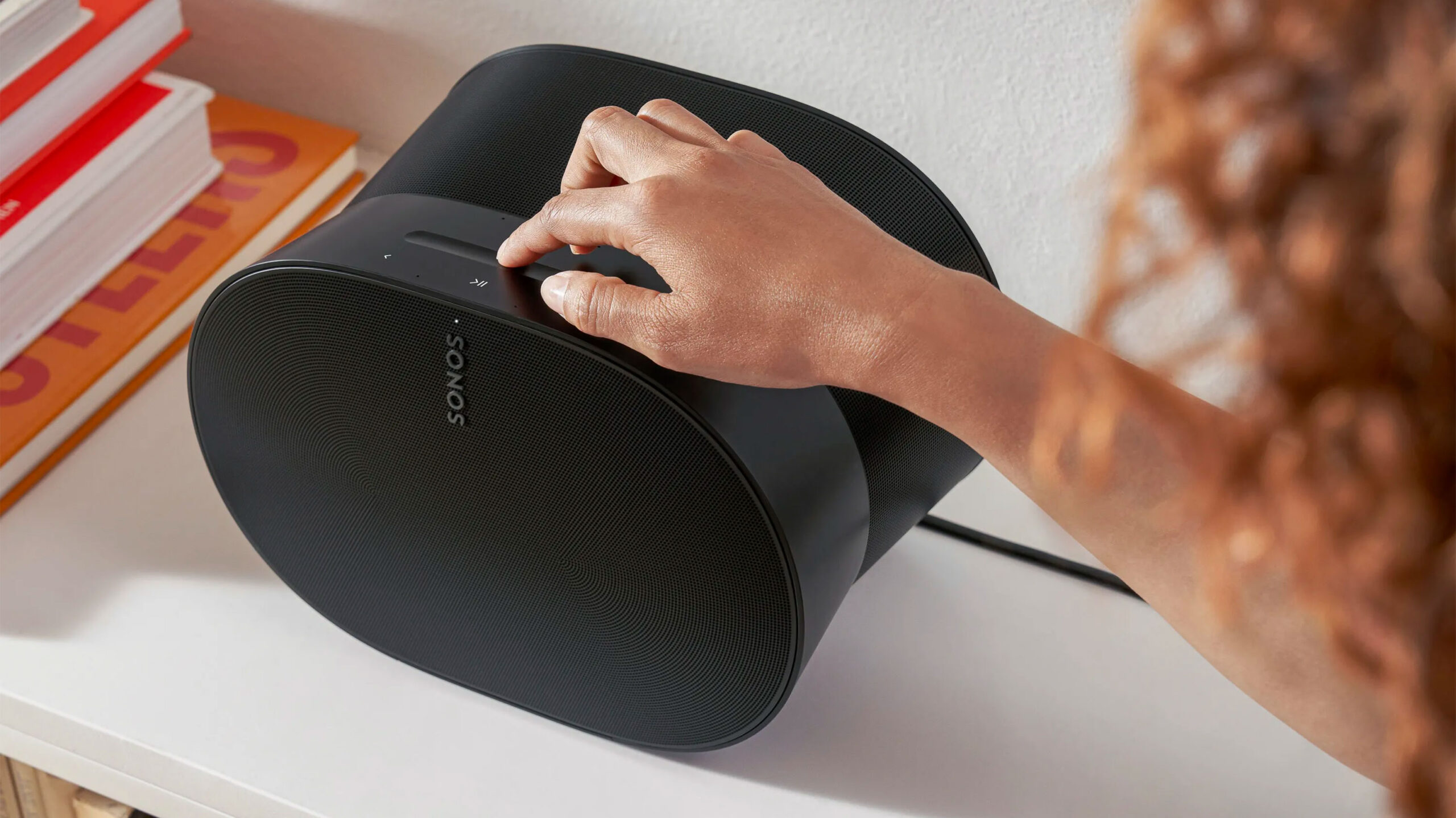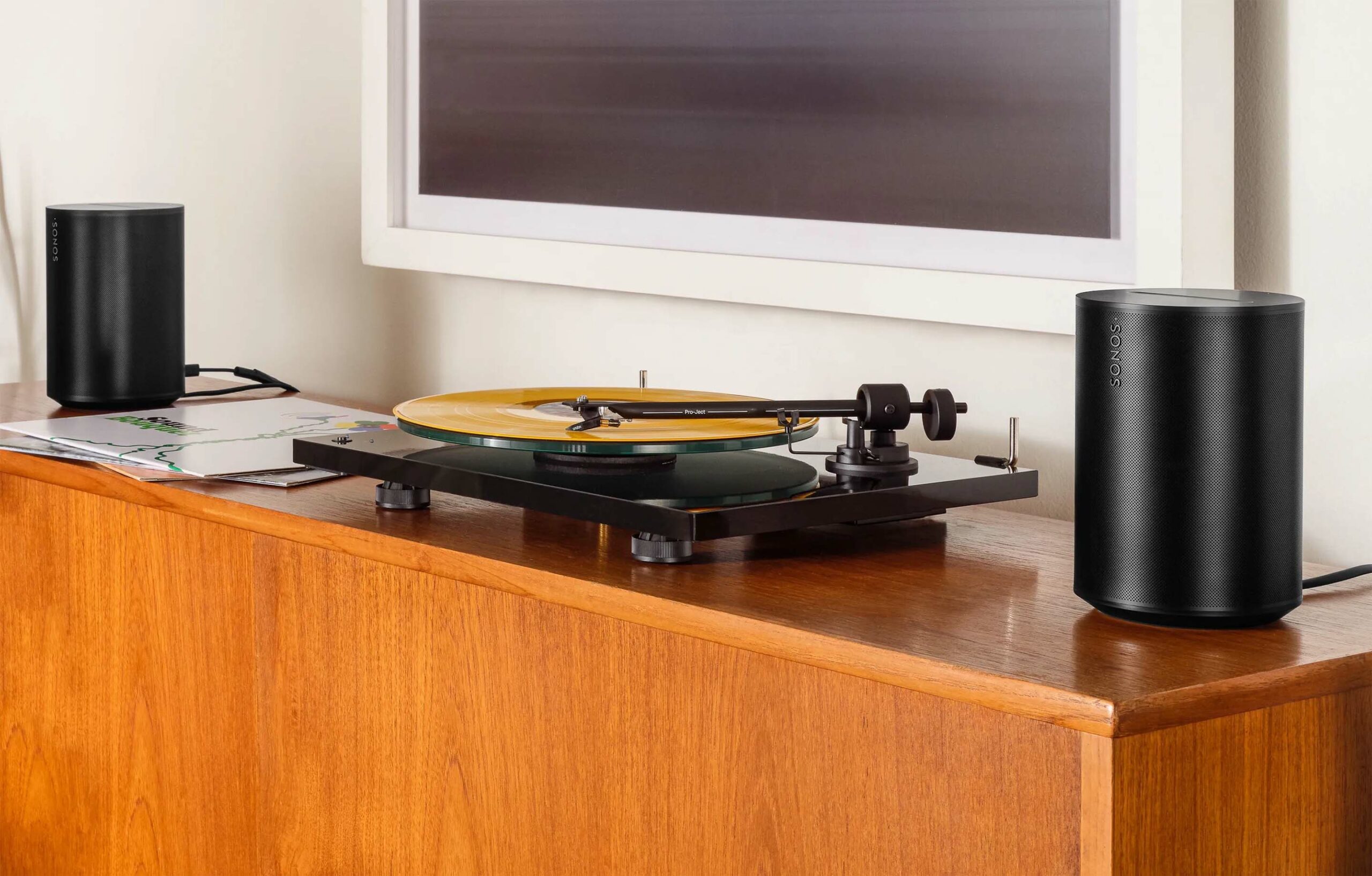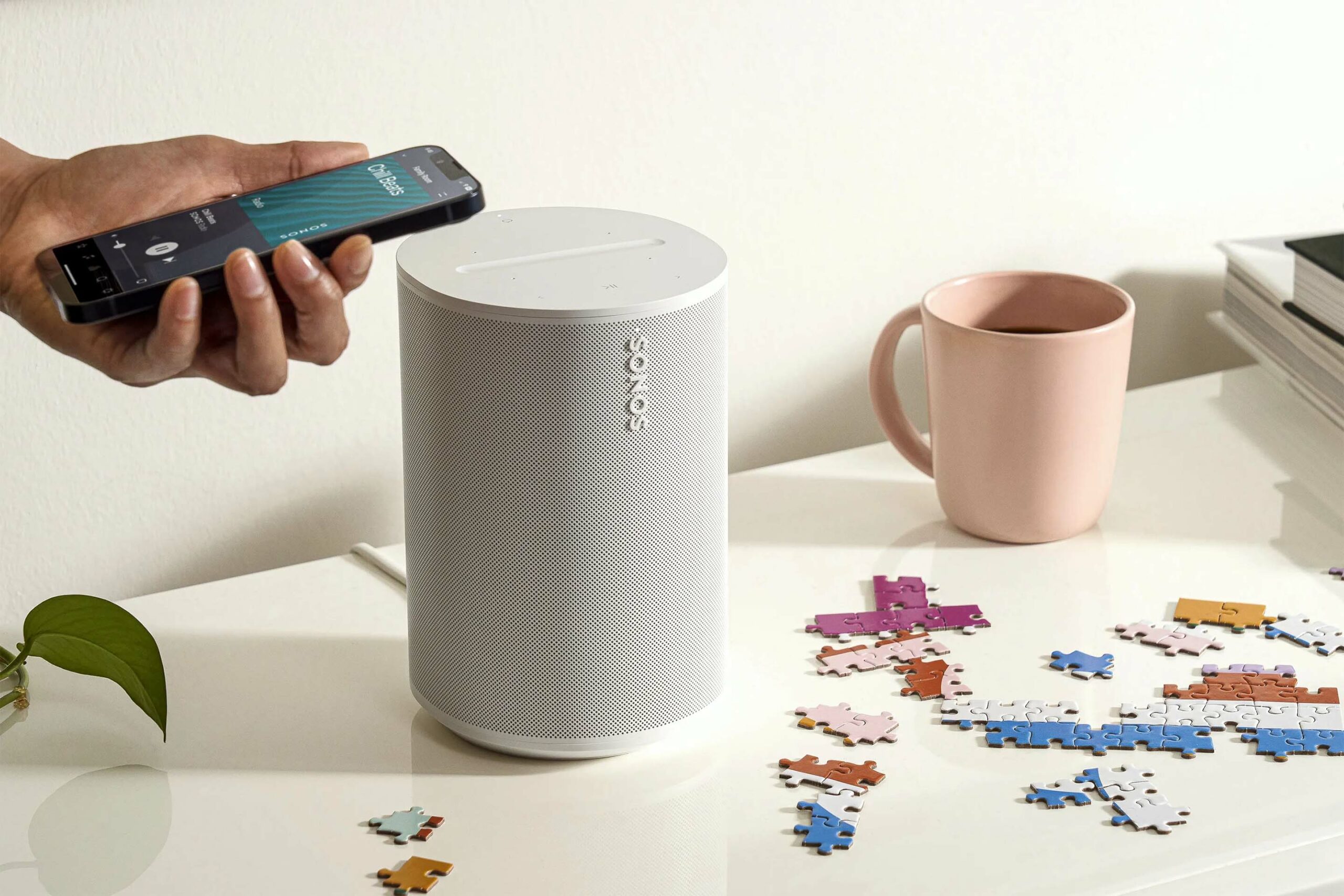
Sonos has two new speakers on the way, one set to replace the existing Sonos One and the other slated to showcase spatial audio capabilities.
The Verge detailed the new Era 100 and Era 300 Sonos speakers and shared marketing images it obtained of both speakers. According to the publication, Sonos plans for a March release of both speakers.
The Era 100 will reportedly cost about $250 USD (roughly $337.42 CAD), which The Verge notes is a slight increase over the $219 cost of the Sonos One speaker in the U.S. In Canada, the Sonos One costs $269 CAD — if Sonos follows a similar pricing scheme in Canada, the Era 100 could be $30 to $40 more, putting it in the low $300 range.
On the other hand, the Era 300 speaker will likely cost $450 USD (about $607.37 CAD), coming in under the cost of the Sonos Five speaker. The Verge suggests Sonos will keep the Five in the lineup rather than replace it with the Era 300.

Sonos Era 300 in white | Image credit: The Verge
Both speakers will offer Bluetooth audio playback and USB-C line-in, offering more choice and flexibility for using the speakers. The USB-C line-in will be particularly helpful, allowing people to plug in external sources like a turntable, something that’s not possible with the Sonos One. (One of the marketing images published by The Verge shows a Sonos Era 100 speaker with an extra cable going into it, likely the USB-C line-in.)
Additionally, both speakers will offer Wi-Fi 6 support, Bluetooth 5.0 and AirPlay 2. Sonos also plans to sell a “combo adapter” for plugging in the speakers over ethernet.

Two Sonos Era 100 speakers with a turntable | Image credit: The Verge
Interestingly, the Era speakers may be the first to support Trueplay on Android… sort of. Trueplay is Sonos’ tech for tuning speakers for the room they’re in. Currently, users need an iPhone or iPad to tune their speakers, but the Era 100 and 300 will support “quick tuning,” which uses the built-in microphones on the speakers to optimize for the room. The old tuning style, which involves walking around the room holding an iPhone or iPad, will still be available as well, and it will continue to not support Android.
All about spatial audio, but not with Apple
The Verge notes that the Era 100 speaker isn’t geared for spatial audio. It reportedly doesn’t include upward-firing drivers. Instead, it has two tweeters for true stereo sound and an enlarged mid-woofer for more powerful bass. The Verge stresses that the speaker is an evolved Sonos One with better performance.
The Era 300, on the other hand, is all about spatial audio. The size falls between the Sonos One and Five speakers, and the 300 offers six total drivers that push sound forward, left, right and up. When paired with either a Sonos Arc or Beam (Gen 2) as rear surrounds, a stereo pair of Era 300s will deliver immersive Atmos surround sound.

Sonos Era 100 speaker in white | Image credit: The Verge
However, it sounds like customers might have some trouble getting access to spatial audio. The Verge reports that spatial audio tracks will be available from Amazon Music Unlimited, but Sonos hasn’t reached an agreement with Apple to use its Apple Music Dolby Atmos library (for now, that functionality remains exclusive to the HomePod, though you can play spatial audio through an Apple TV 4K connected to an Atmos speaker system, such as the Arc or Beam). Of course, this could change before the March release.
Apple isn’t the only tech company giving Sonos trouble, though. Thanks to an ongoing legal battle between Sonos and Google, The Verge reports that Google Assistant might not be on the new Era speakers. The company’s internal marketing specifically mentions Amazon Alexa, but not Assistant.
There will also be sustainability improvements built off previous announcements from Sonos.
Those interested can read the full report here.
Image credit: The Verge
Source: The Verge
MobileSyrup may earn a commission from purchases made via our links, which helps fund the journalism we provide free on our website. These links do not influence our editorial content. Support us here.


